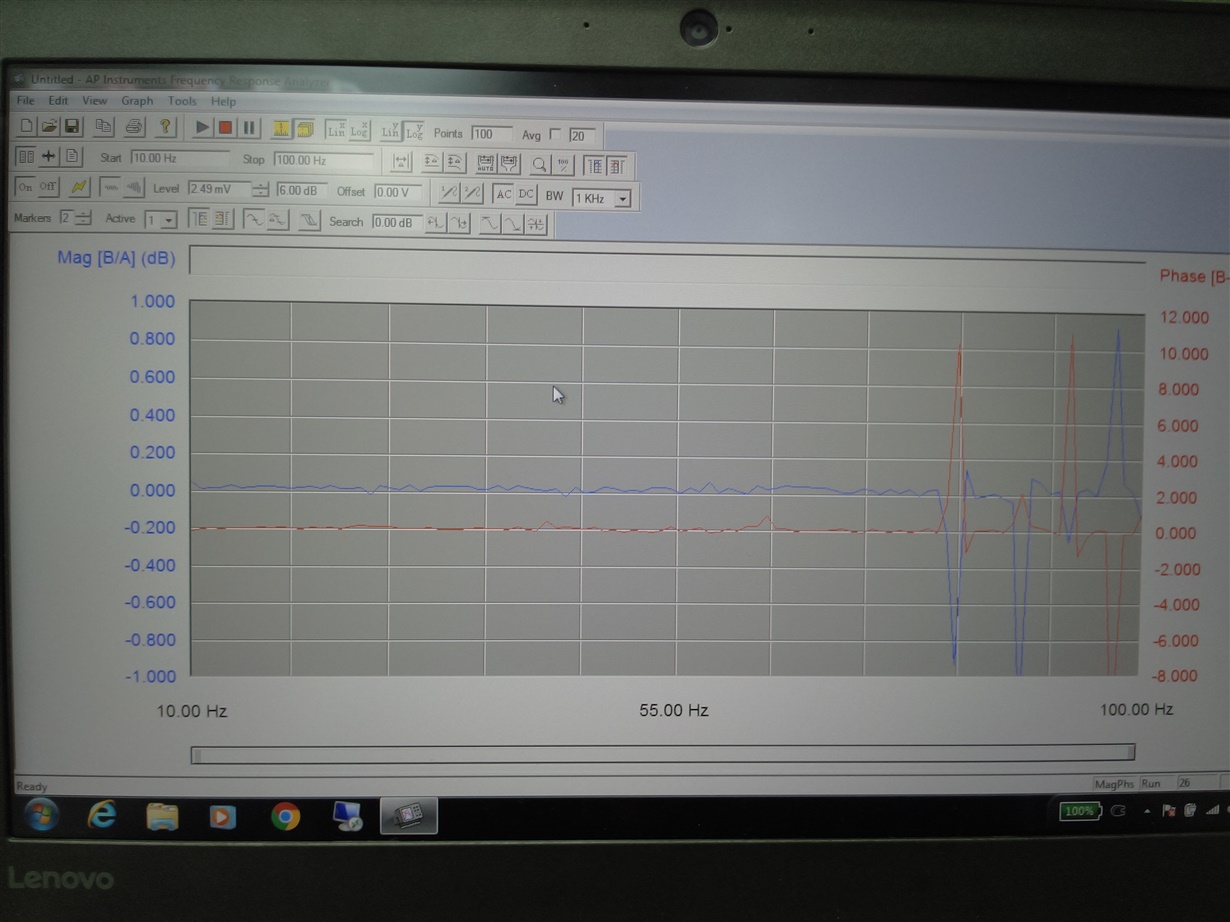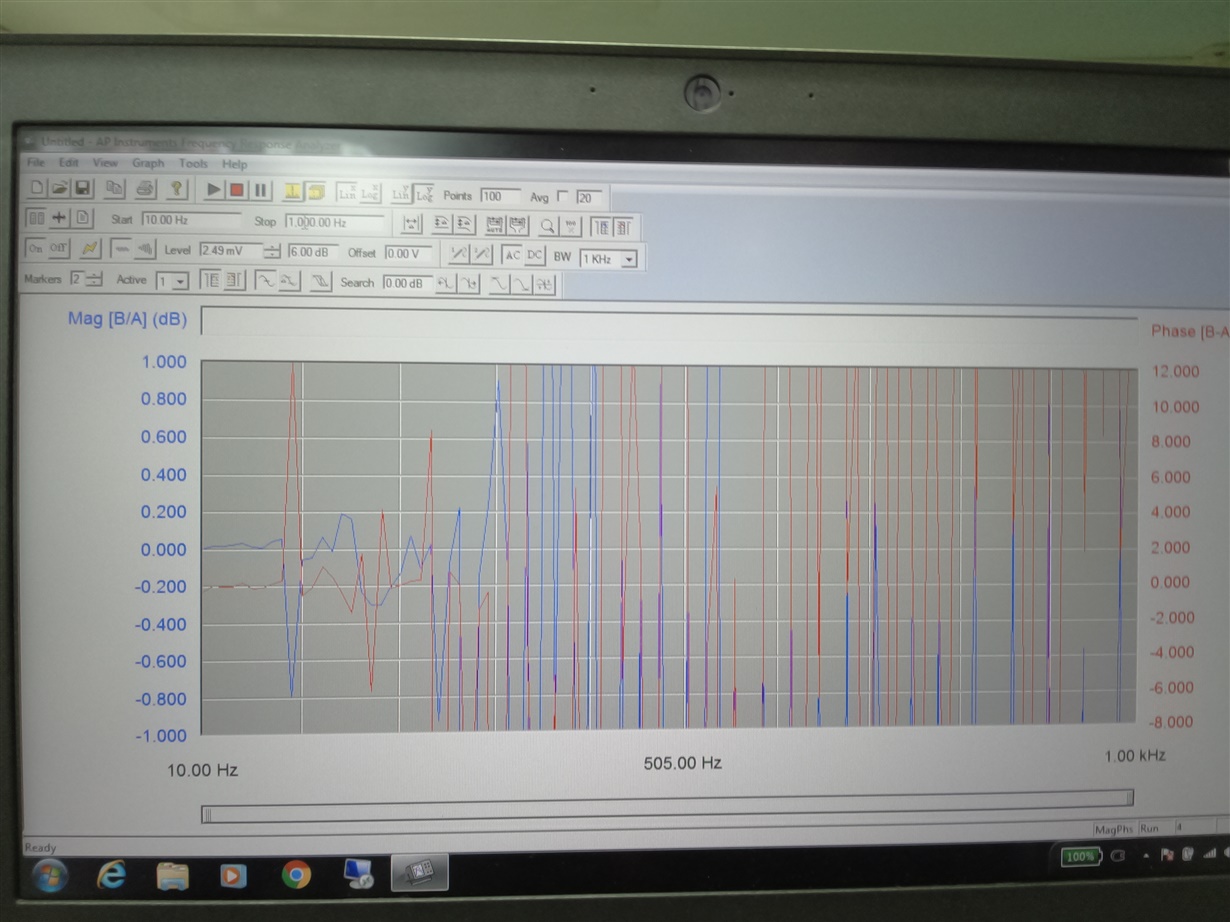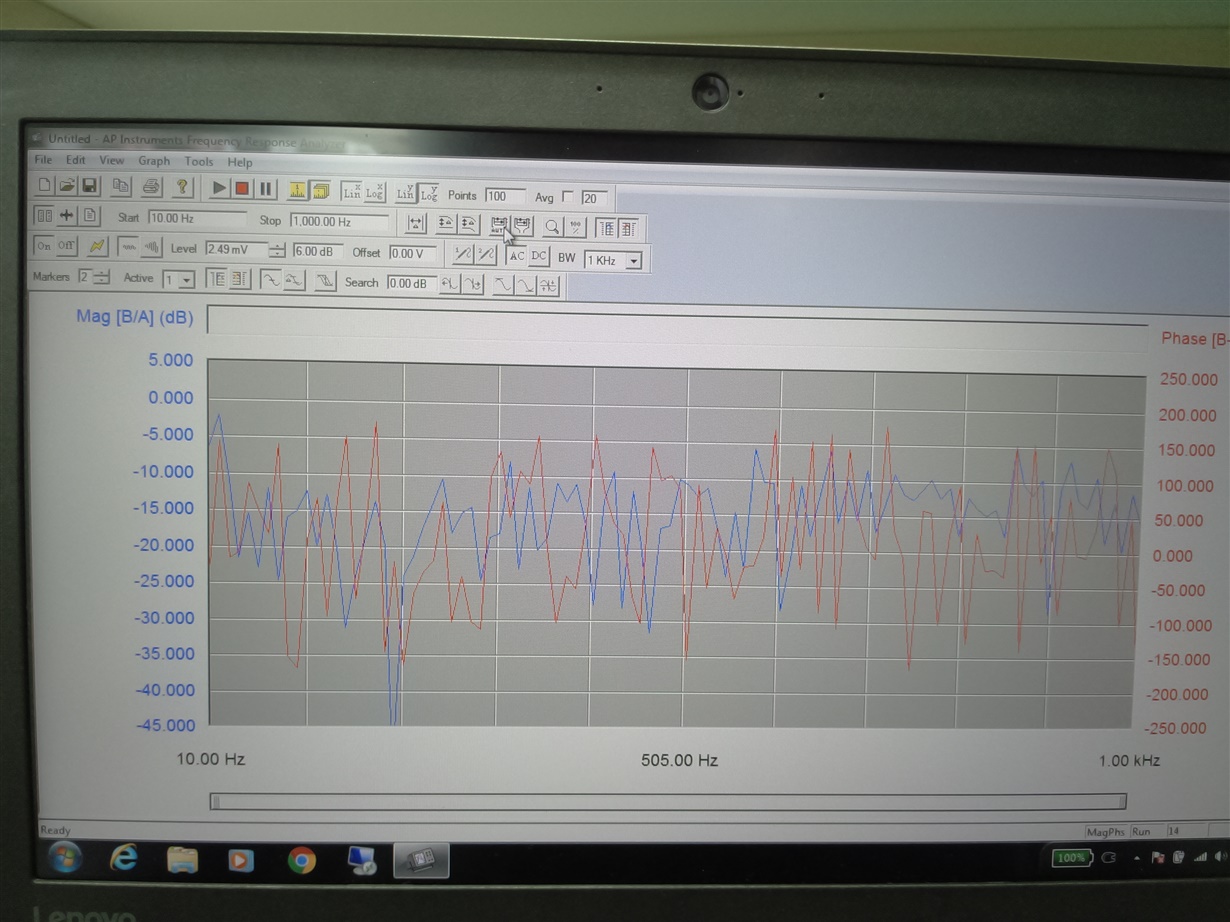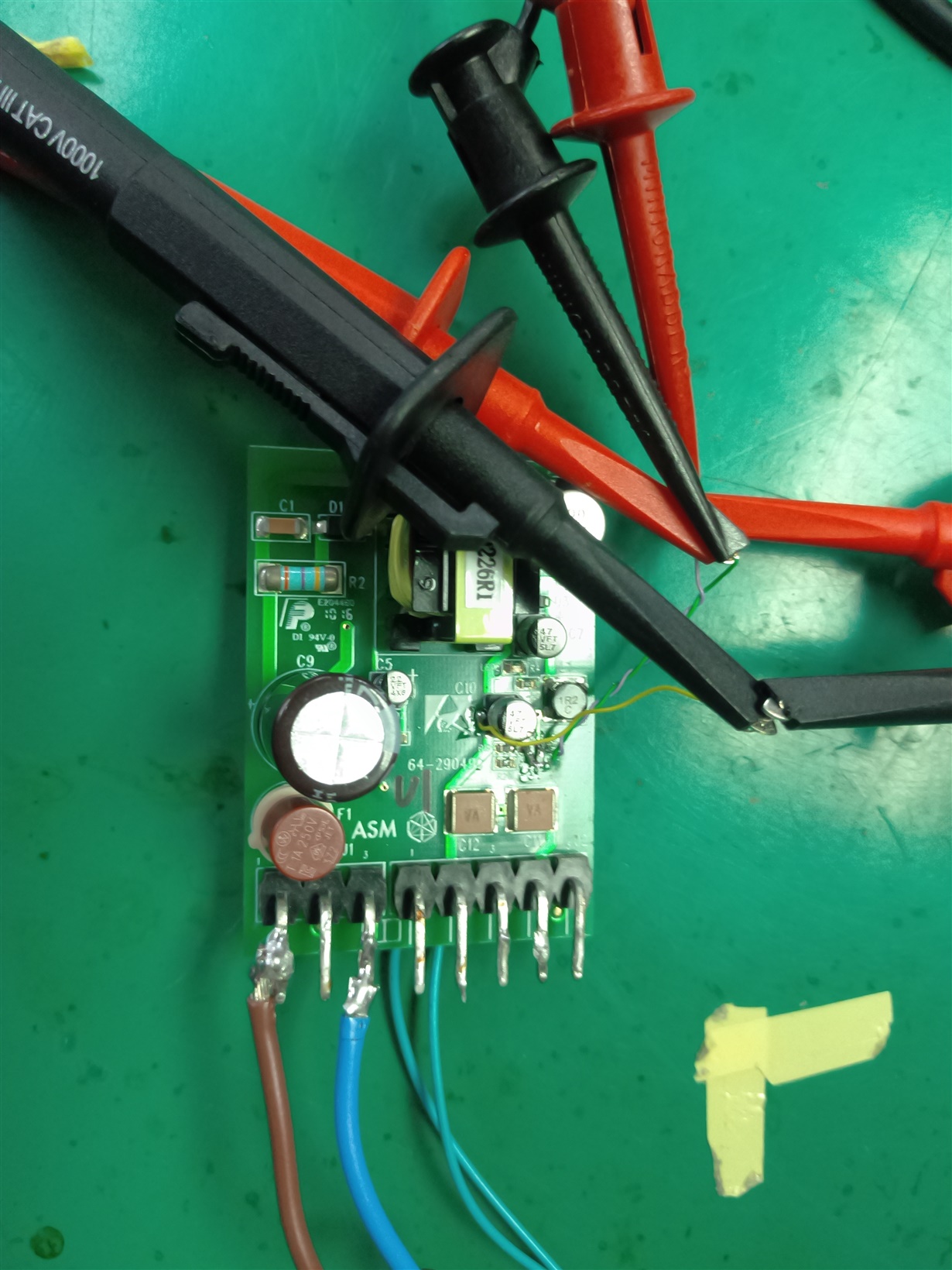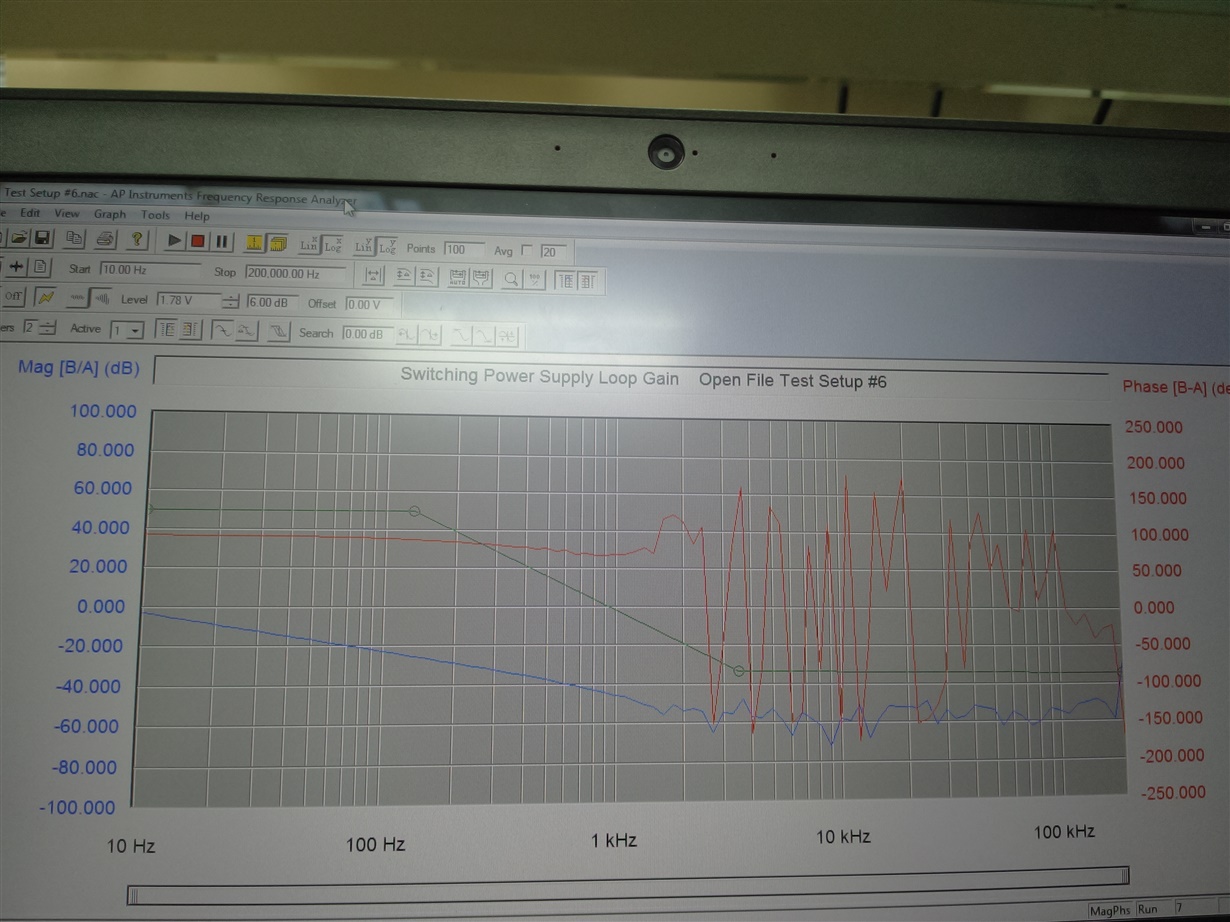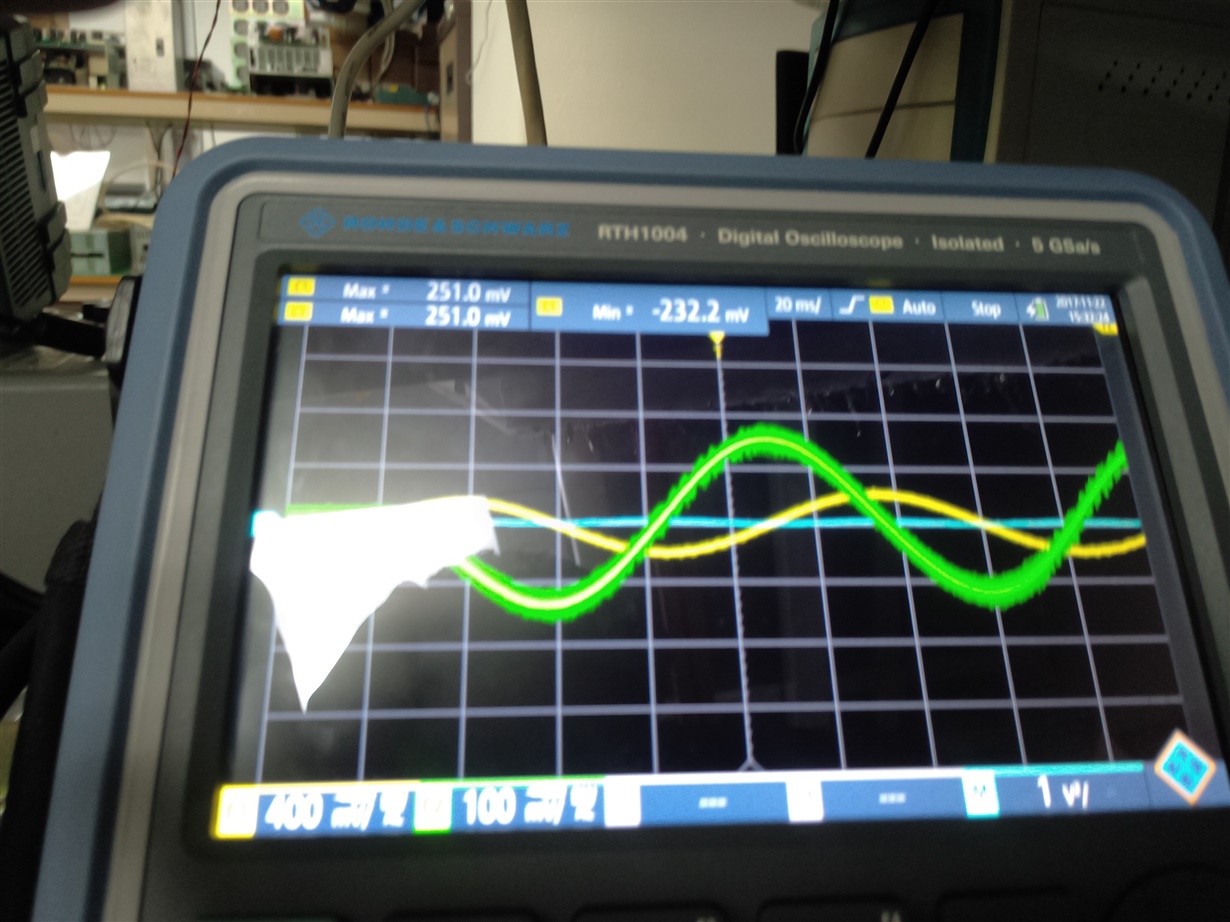Hello,
I am trying to find measure the Bode Plot of a 12W Flyback converter made from Viper27 IC. It has an integrated MOSFET and controller.
I want to know the phase margin at the crossover frequency to establish its stability and Steady state error.
The feedback is controlled by TL341. It has a feedforward cap across high-side feedback voltage divider resistor and a C parallel with a series RC network across ref and cathode pins of the TL431.
I am using the AP300 frequency response analyzer. I inserted a 22 ohms resistor above the high-side feedback voltage divider resistor. I am injecting the noise signal using their high bandwidth transformer. 30MHz.
At no load and full load the output is stable from measuring the flyback output voltage.
The problem is everytime I try to measure it on the analyzer the phase and magnitude plots look erratic. They have sharp edges and they cross the 0dB and 180 degrees line many many times.
I have attached the waveform and test setup (similar) for your reference.
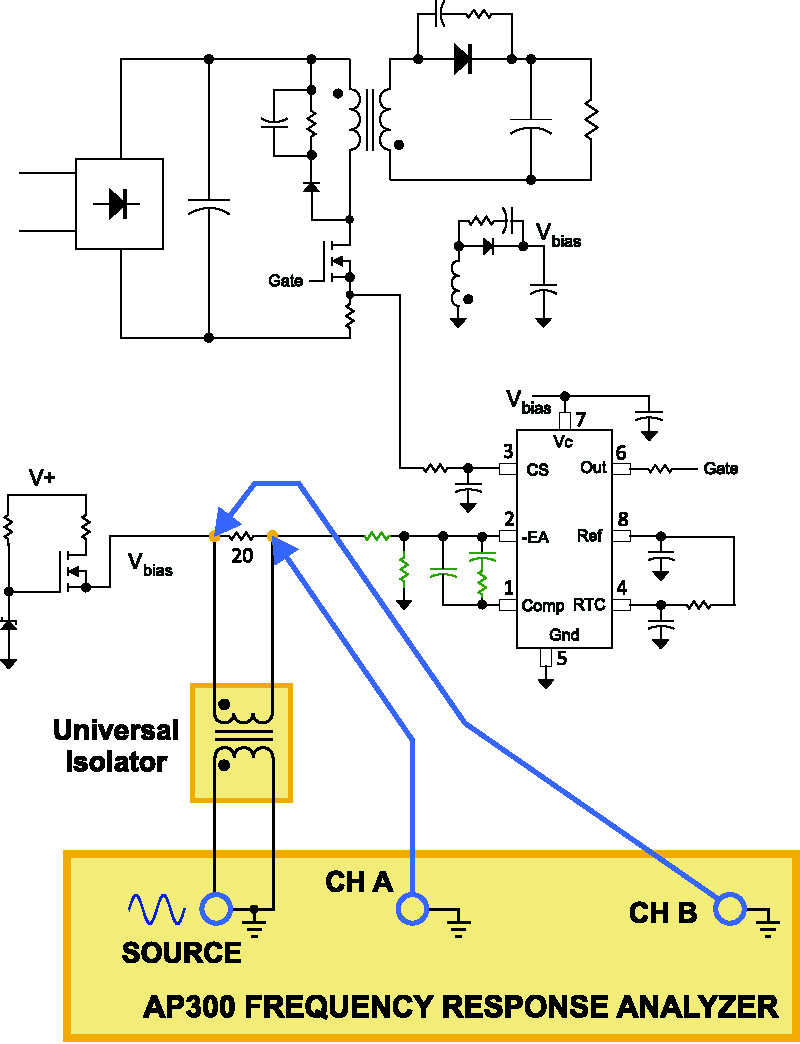
Please help me to identify how I can get a clean bode plot?


